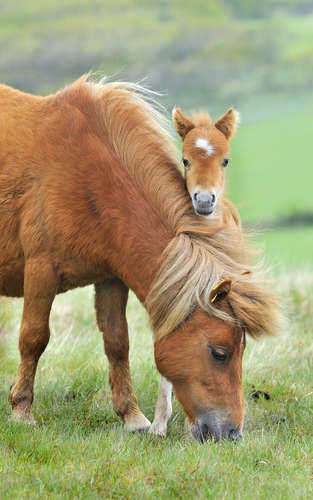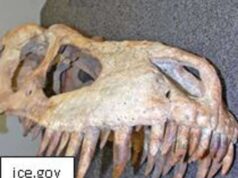
Undiscovered Secrets of Evolution from a Horse
The horse is one of the most iconic animals in human history. Once indispensable to transportation and farming, horses now hold an important place in sports and recreation. In addition to their cultural significance, horses also offer valuable insights into the process of evolution. Through analysis of the horse’s genome and fossils, scientists have uncovered many fascinating and previously undiscovered secrets of evolution. This article explores some of the most interesting of these discoveries.
The Evolution of the Equine Foot
One of the most remarkable aspects of horse evolution is the transformation of the equine foot. The modern horse has a single toe that is supported by a complex network of bones and soft tissue. However, the horse’s early ancestors had multiple toes that gradually disappeared over time. Through the study of fossils, scientists have discovered that this process of toe reduction occurred gradually over millions of years, as horses moved from forest to grassland environments.
The Role of Environment in Evolution
The evolution of the horse’s foot also provides insights into the role that environment plays in the process of evolution. As horses moved from forest to grassland environments, their limbs and feet evolved to adapt to a new way of life. The ability to run at high speeds, for example, became more important in open landscapes, leading to the development of longer, stronger legs.
The Evolution of Teeth
Another fascinating aspect of horse evolution is the change in the animal’s teeth over time. Early horse ancestors had teeth that were adapted for a mostly vegetarian diet, with broad, leaf-shaped teeth for grinding. However, as the horse’s diet shifted to grasses, its teeth became longer and more pointed, allowing horses to tear and crush the fibrous vegetation. Over millions of years, the horse’s teeth evolved to become highly adapted to its new diet.
The Role of Selective Breeding
Selective breeding, or the deliberate process of breeding animals for certain desirable traits, has played a significant role in the evolution of the horse. Through centuries of breeding, humans have helped to shape the modern horse’s physical appearance, from its size and color to its gait and temperament. However, this selective breeding has also had unintended consequences, leading to a reduced genetic diversity among many horse breeds.
Conclusion
The horse is a fascinating animal that offers valuable insights into the process of evolution. From the development of the equine foot to the evolution of teeth, the horse’s history reveals the complex interplay of genetics, environment, and selective breeding. By studying the secrets of horse evolution, scientists can better understand how animals adapt to changing environments and how the process of evolution can shape the world around us.
It sounds like Jurassic Park—scientists recover DNA from a long-dead animal in the hopes of understanding more about how it lived. This week, scientists announced that they had sequenced and reconstructed the genome of a horse that died 700,000 years ago. Their research has revealed significant new findings about the evolution of horses and donkeys, and may open the door to new research using prehistoric genomes.
Until recently, scientists who wanted to understand the evolution of animals over time had only one option for records: fossils. While fossils extend further back in time than genome study can, they have some flaws that render them less than ideal for understanding the particulars of species evolution.
For one thing, scientists working to reconstruct the history of a species using fossils are hampered by an inevitably incomplete fossil record. Fossils themselves are often also incomplete or damaged, and it can sometimes be difficult for researchers to determine which parts of a fossil’s differences are due to species changes and which are due to individual variation.
Studying the genome of ancient organisms gives a significantly more detailed look at exactly how species have changed over time. By comparing the 700,000 year old horse genome with more recent horse DNA, scientists revealed that the ancestor of horses and donkeys actually evolved two million years earlier than previously thought.
While genomics allows unprecedented insight into how creatures evolved in relatively recent biological history, Jurassic Park dreamers should take note: the scientists who sequenced the genome of the ancient horse believe that there is no way for enough DNA to be preserved for sequencing in any creature that died more than about 1 million years ago. Until this most recent genomic sequencing, the earliest genome that had been analyzed belonged to a human who died about 70,000 years ago.
The horse DNA from what is now known as the Thistle Creek Horse was recovered from a bone that had been preserved by being buried beneath volcanic ash in what is now Canada’s Yukon Territory. Intensely cold permafrost conditions also contributed to the preservation of genetic material. DNA from several other species, including a pre-domestication horse from 43,000 years ago, modern domesticated horses, and the last known wild horse population left on Earth.
According to the results of the genomic analysis, the modern wild horses analyzed have not cross-bred with domesticated horses, and represent a significantly different genetic population. Researchers also determined that horse populations have shifted significantly with climate patterns, increasing in population during cold times and dying off during warmer periods.























